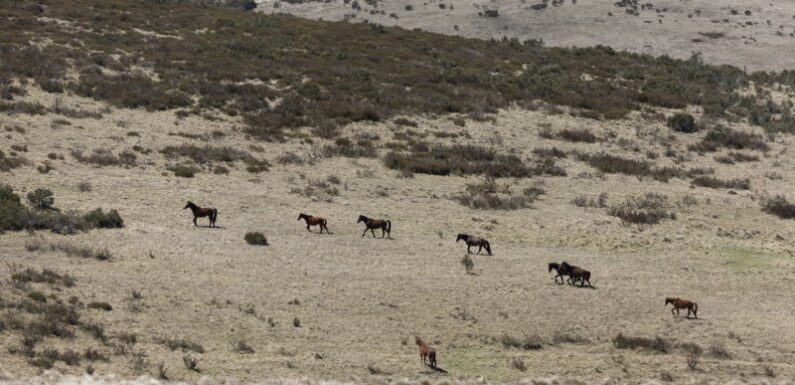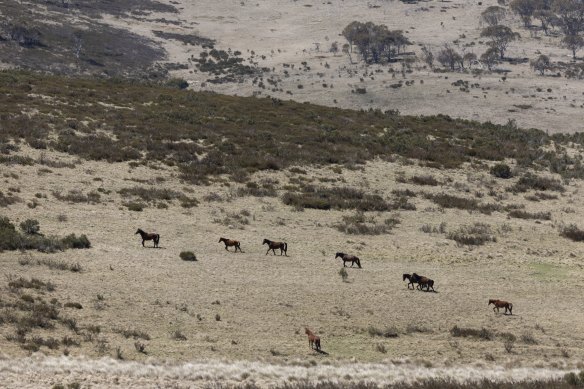
Save articles for later
Add articles to your saved list and come back to them any time.
The NSW government has approved the aerial shooting of feral horses in Kosciuszko National Park in a bid to control the rapidly ballooning population.
NSW Environment Minister Penny Sharpe opened public consultation on the aerial shooting proposal in August, at the time saying it would help reduce the feral horse population and protect more than 30 native threatened species.
Feral horses will be shot from the sky after the NSW government found it would help reduce their booming numbers. Credit: Alex Ellinghausen
Feral horse populations in the park have increased by more than 30 per cent in two years despite the state government setting reduction targets, prompting experts to demand a bigger culling effort.
The NSW government published data this year showed feral horse populations in the national park were up to 18,814, a sharp increase from the estimate of 14,380 horses two years ago. In 2016, there were only 6000 in the park.
Aerial shooting will be used alongside existing control methods – such as ground shooting, and trapping and rehoming – to reach the legally required wild horse population target of 3000 by mid-2027.
Previously, environmental groups said the number of feral horses could increase to 50,000 in the next decade unless stronger measures are introduced.
The proposal to amend the plan attracted 11,002 submissions, of which 82 per cent expressed support for aerial shooting.
Sharpe said there were simply too many wild horses in Kosciuszko National Park and that threatened native species were in danger of extinction and the entire ecosystem was under threat.
“We must take action,” she said. “This was not an easy decision. No one wants to have to kill wild horses. I have carefully considered all the options, and I thank everyone who took the time to make a submission.”
The topic has been hugely controversial since 2000, when fires and droughts ravaged the landscape, leaving 700 horses close to starvation. Two teams of trained shooters in helicopters flew low and shot 600.
Following a backlash from the incident, then-state Labor environment minister Bob Debus banned aerial shooting. The issue has remained highly controversial since – with environmental groups pushing for the method to be used to control the rapidly growing population.
Meanwhile, pro-brumby supporters say the pest should be protected because of its historical heritage associated with settler life. They also claim the brumby numbers have been inflated.
Previously, Sharpe said that, if approved, aerial shooting would be carried out by skilled, highly trained shooters to the highest animal-welfare standards.
More to come
Get to the heart of what’s happening with climate change and the environment. Our fortnightly Environment newsletter brings you the news, the issues and the solutions. Sign up here.
Most Viewed in Environment
From our partners
Source: Read Full Article
